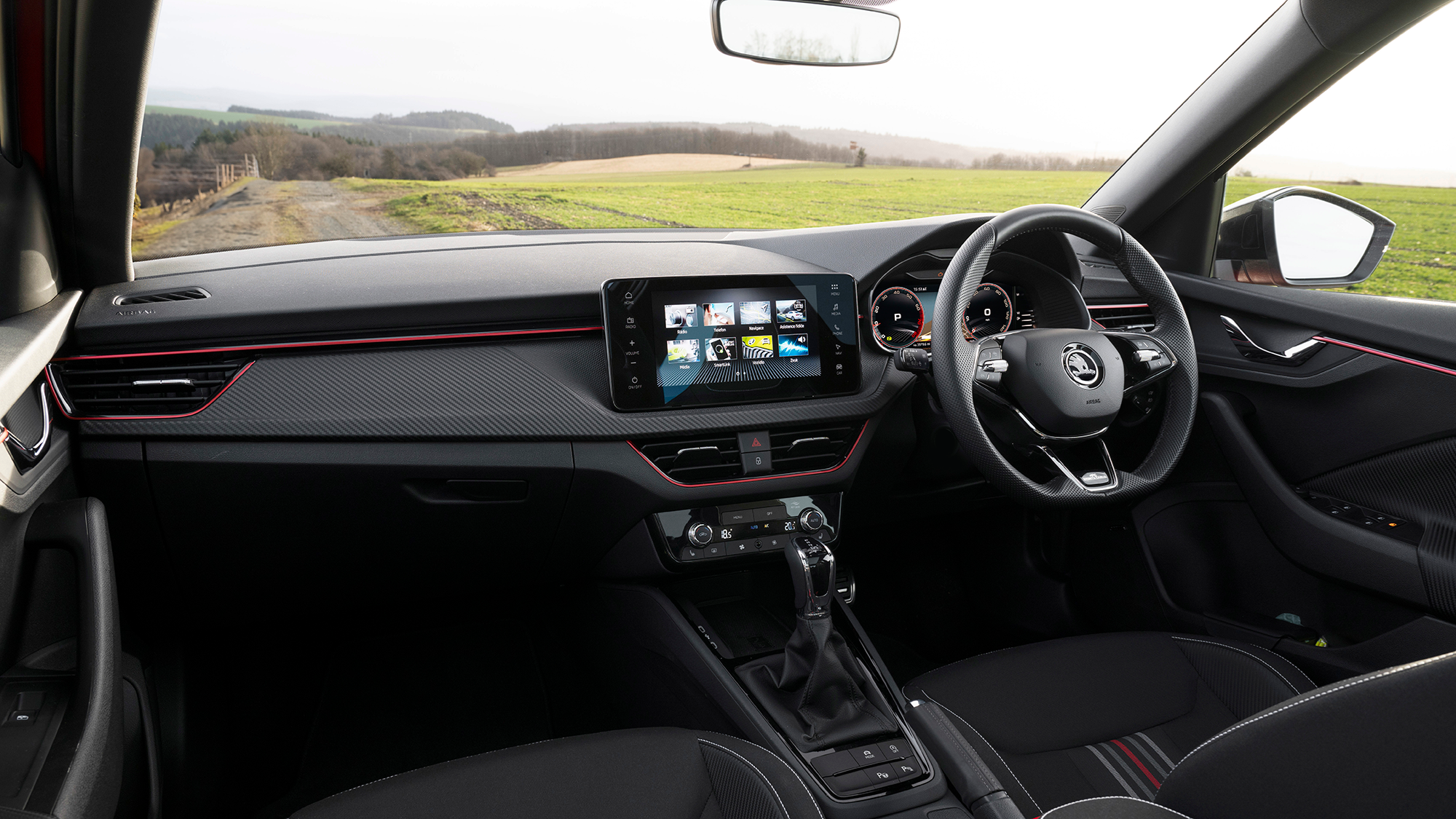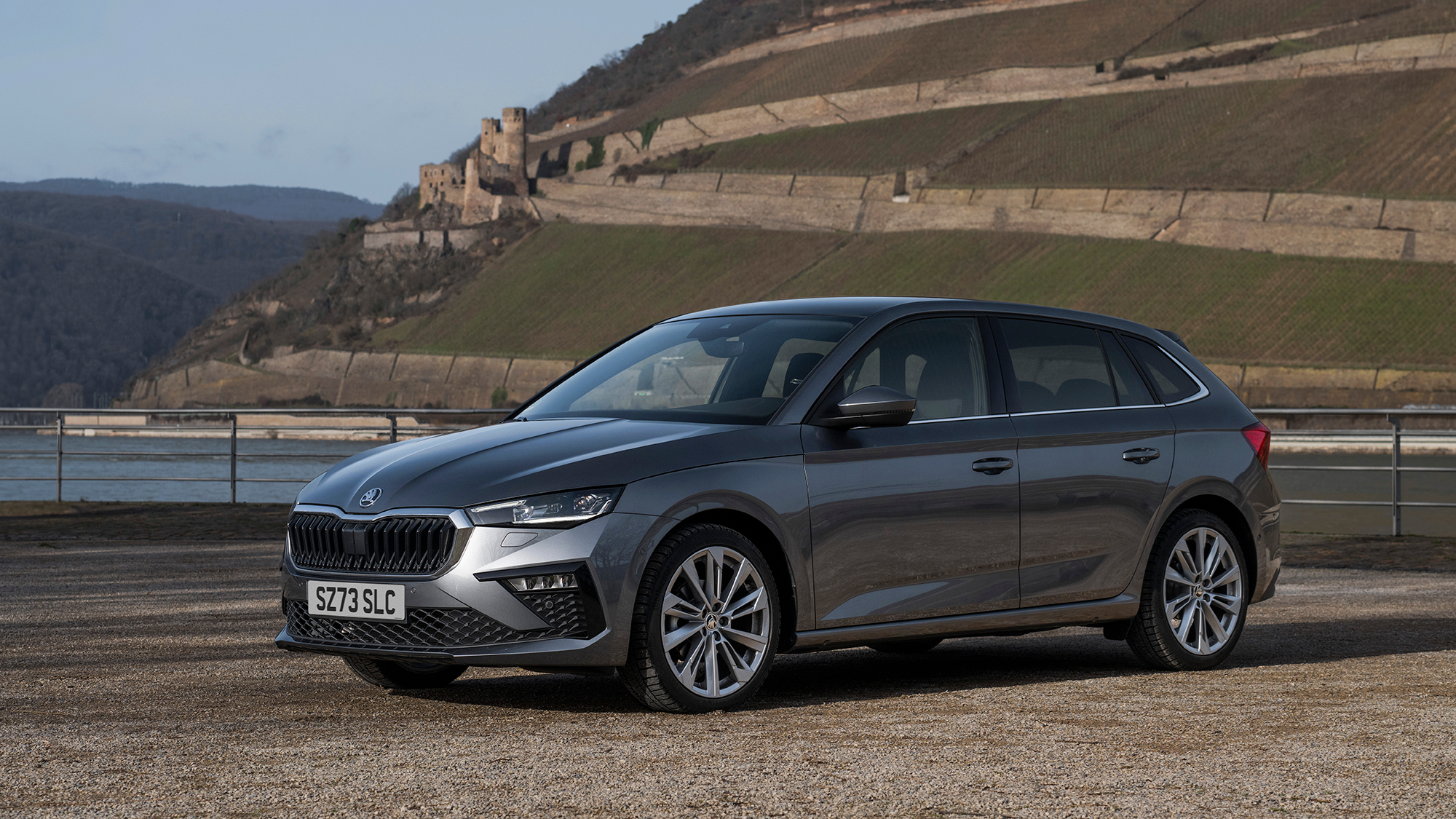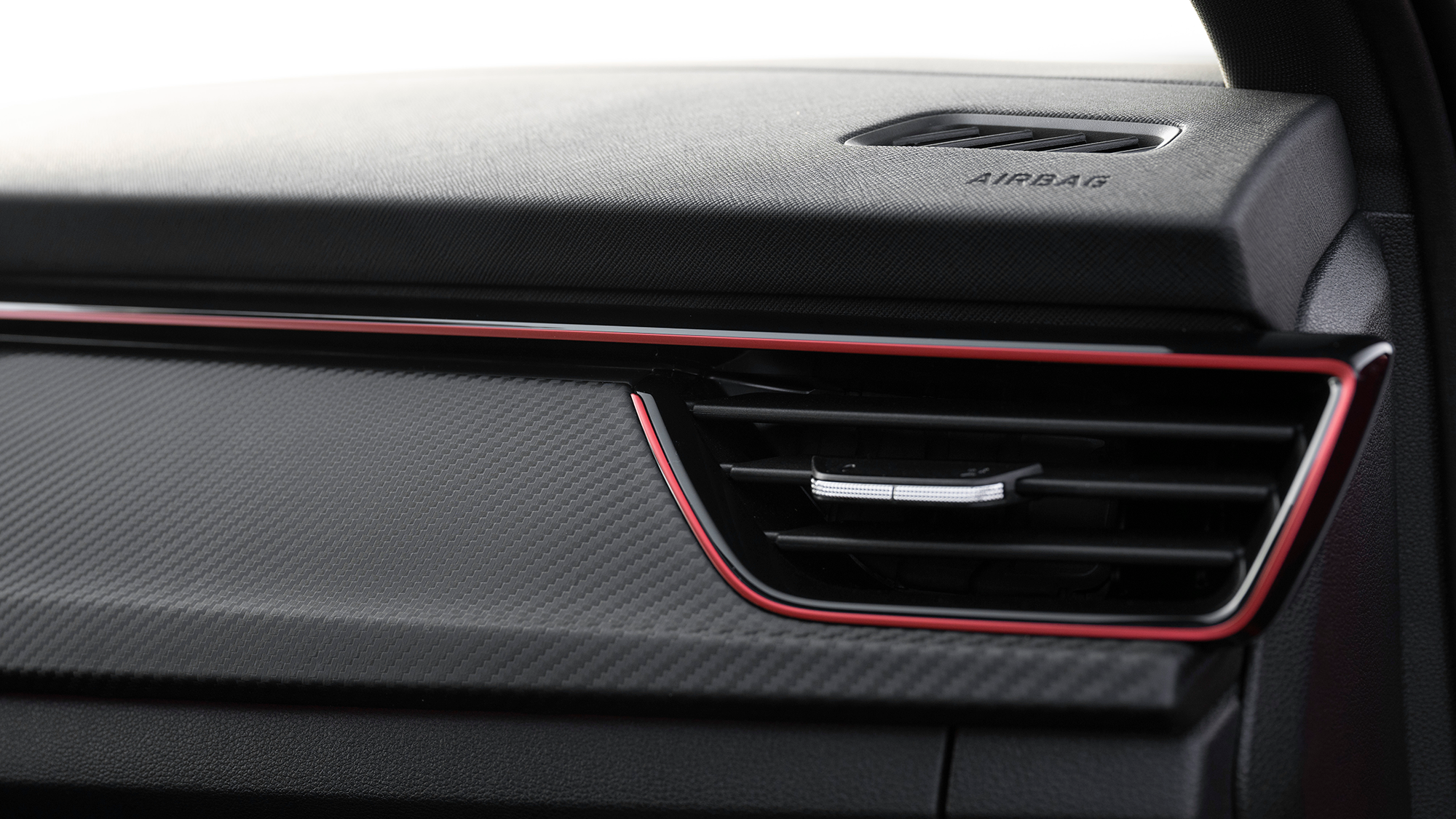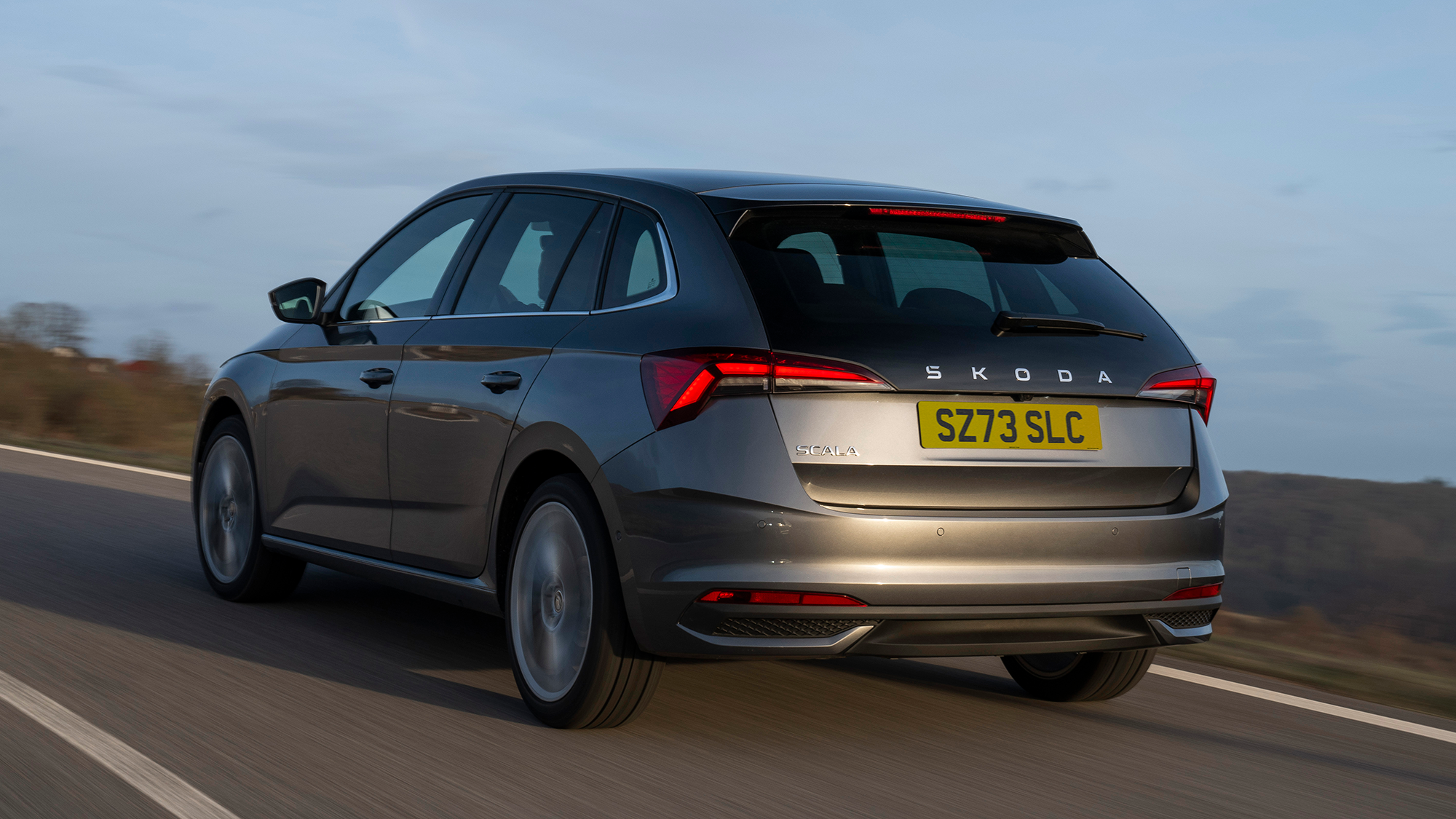► Skoda Scala updated for 2024
► New trims, engines and exterior tweaks
► Does it hold up to tough competition?
In many ways, the Skoda Scala punches above its weight. It may share underpinnings with other Volkswagen Group hatchbacks like the Seat Ibiza and the Volkswagen Polo, but owing to its roomy interior and large footprint, the Scala counts bigger hatchback models like the VW Golf as rivals.
As small hatchbacks go, it’s an impressive contender. Comfortable and well-built, the Scala represents considerable value for money but arguably falls short of other large hatchbacks in terms of its overall allure. It isn’t an especially exciting car though Skoda has sought to rectify this with a facelift for the Scala in 2024.
So, what’s new on the Scala?
Let’s start with the exterior. Like its big brother, the Skoda Kamiq, the updated Scala has a new octagonally shaped grille, a tweaked front bumper and redesigned headlights for 2024. Sticking to the headlights, they’re also now available with LED matrix technology for the first time – albeit as a £1,650 option.
Round the back, the Scala’s rear bumper has been updated with new wing elements while the taillights have been tweaked for a sportier look. Have the styling updates worked? There’s certainly a bit more going on, but their effectiveness in making the Scala appear sportier is far from conclusive.
What about the interior?
Yep, the interior has received a refresh, too. There are three trim levels on offer: SE, SE L and top of the range Monte Carlo. For the lower two of the three, a patch of soft cloth has been added to the passenger side of the dashboard. According to Skoda, it’s been introduced to create a living room-type ambiance in the cabin; we already thought the Scala interior was an inviting space, but it’s now even more so for it.

If you move up to Monte Carlo, the interior gets a full festooning of red trim around the upholstery. On the dashboard, the cloth is replaced by a hard imitation carbon surface, though it feels a little plasticky and if anything brings the overall feel of the cabin down despite the higher cost.
Is the interior an improvement on other Skodas?
We don’t have a downer on Skoda interiors in general, but you’re usually left in no doubt that you’re at the bottom of the VW Group hierarchy when you’re sitting behind the wheel. The Scala however, manages to elevate itself above the norm.
Up front, the materials on offer are far superior to what you used to get in the Rapid, and for sheer design it’s an improvement on both the Octavia and Seat Leon. Sure, there are still smatterings of harder plastics around, but the general fit and finish is absolutely up there with the Ford Focus, for example.
The only area that you might feel a touch short-changed is outright passenger space. Sitting next to an average-size passenger, you feel much closer to them than you would in a Golf or a Focus, with the tiny armrest and narrow centre console meaning awkward hard/elbow brushes are a common occurrence.

How much cheaper will the Skoda Scala be than a VW Golf?
With prices starting from £22,095, it’s a few thousand pounds cheaper than the benchmark VW, yet since this is a Skoda you still get a respectable number of goodies thrown in.
Entry-level SE spec cars get LED headlights, height-adjustable front seats with lumbar support and an eight-inch infotainment screen as standard, while upgrading to SE L trim (an extra £1800) adds light and rain sensors and a larger 9.2-inch Amunsden sat-nav infotainment system and a 10.25-inch Virtual Cockpit display.
Yep, that’s right, Audi’s cutting-edge tech of 2014 is now Skoda’s party piece to set it apart from the rest. It’s not exactly the same as what you’d get in a TT or an A4 (mainly because it’s not as good), but compare it to Volkswagen’s equivalent and it’s far more intuitive.
It’s not the only thing the Scala has taken from Audi either, the scrolling rear indicators (standard on SE L) are sure to let those behind you know that you are absolutely being groomed for Audi ownership in later years.
Along with all the red trim and fake carbon panels, Monte Carlo spec includes keyless entry with start/stop technology, a rear view camera and drive mode select. Just don’t expect any more performance in this trim – it may look more focussed, but it doesn’t receive any additional power.
Is there more room in the back?
Happily, yes. Those in the rear seats are well taken care of in the Scala, with oodles of leg, foot and headroom on offer – even with the optional panoramic roof fitted. Sure, fitting three across the rear seats may be a squeeze, but that’s far from unusual for a car in this class. What does cause more of an issue however, as the large central tunnel that robs floorspace for those in the middle.

As for boot space, it’s exceptional. The Scala can take a class-leading 467 litres of luggage with the rear seats in place, expanding to 1410 litres with the rear seats down – easily beating the Golf’s 380 and 1270 litres.
Driving
The updated Scala is available with a choice of three TSI engines – two 1.0-litres that produce 94bhp and 114bhp and a 1.5-litre that’s good for 148bhp. The smaller two of the three engines are new to the Scala, coming from the evo2 generation of the VW EA211 engine family. We spent the most time in an example with the 114bhp engine and a standard six-speed manual gearbox, though a seven-speed DSG is also available for this engine and the 1.5-litre – the 94bhp 1.0-litre has to make do with a five-speed manual only.
Work the six-speed ‘box hard enough and you’ll find there’s reasonable pulling power starting from around 2000rpm, allowing you to hit motorway speeds without wringing the engine. We wouldn’t want to drop to anything with less power, with the 113bhp unit’s 9.8-second 0-62mph time already feeling ambitious.
Not that you’ll want to be doing anything remotely sporty in the Scala. Like nearly every other Skoda, this car is at its best when calmly cruising from corner to corner, not putting too much strain on the driver or the chassis.

Tip it into a bend too fast and while grip levels are admirable and the lack of body roll surprising, there’s little sense of engagement or fun through the light steering. A moot point for some buyers, but one that has to be brought up given the Focus and Mk7.5 Golf’s ability to entertain. You can spec optional Sport Chassis Control – 15mm lower than the standard car and with switchable suspension settings – but it’s really not worth it, only serving to make the car more uncomfortable over all but the smoothest surfaces.
As for refinement, the 1.0-litre petrols stay admirably hushed even when worked hard, yet wind noise does pick up significantly around the A-pillar at motorway speeds.
Verdict
It’s easy to compare the Skoda Scala with the Volkswagen Golf, and indeed many will. It’s from the same parent company, is roughly the same size and, at the end of the day, is aimed at similar rivals. In truth, however, it’s not a serious alternative. No, where the Scala belongs is as a higher quality, more spacious alternative to cars like the Vauxhall Astra or Hyundai i30.
Does that make it an also ran? In some ways, yes. But the fact is that the medium hatchback segment is packed with so many exceptional models that there really is no shame in not being among the very top of the class. For many, the Scala will make a superb option offering plenty of space, tech and – perhaps most importantly – value for money.
All our Skoda car reviews